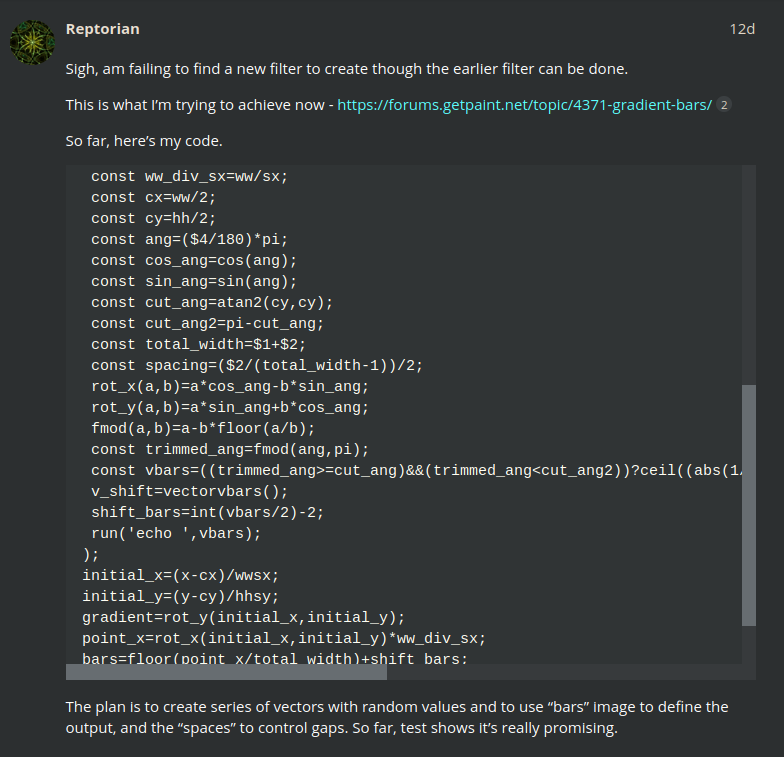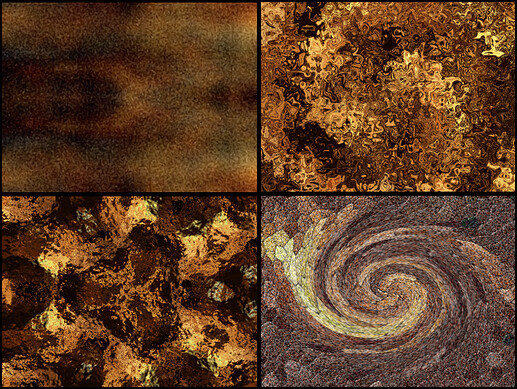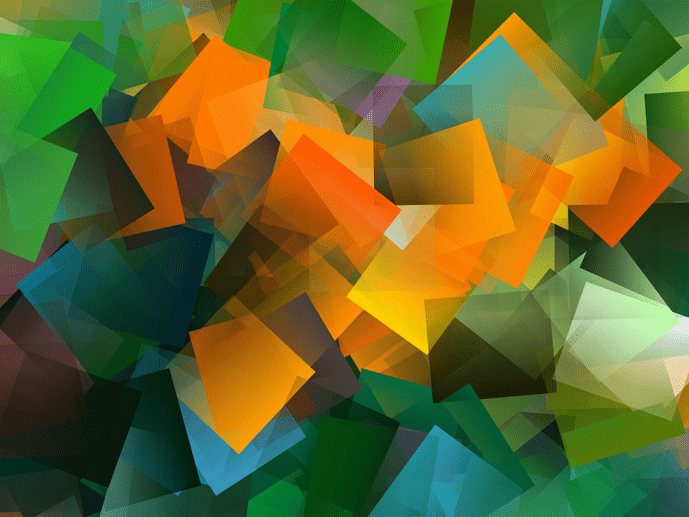You could fork that and see how you can improve it.
I’m no programmer, when I “read” your topics like this one below, it looks like an alien language… Better for me to look at the images ![]()
Larga,
Thank you for mentioning this little app! 
I love what it seems it does. Just like liquid pouring and you know in school we added paint to milk and it marbled, this can do the same thing with 3d looking paint and even glitter settings for a more real gold look.
Here is a YouTube video I loved about the paint effects. https://youtu.be/eKKHccu9cGw
And this is the url I found for the app now. Verve Painter, a Tiny Fluid Dynamics Based Paint Application - Lesterbanks
And his space video is much like the marbling PixLab Patricia Laborda was wanting to create.
But on the link you provided there is a warning that it could cause devices to overheat! It says:
Verve heavily uses GPU shaders, which will heat up any video card eventually! Cards older than 5 years may not be compatible to run Verve.
http://www.taron.de/forum/viewtopic.php?f=4&t=2341&sid=1bfe23d1797d80c07f5696078dd136a0
Hi Patricia,
I’ve been wanting to figure out how to create such real life paintings digitally too!
Thank you for asking the question. Look how many options we’ve been given! 


Larga, below mentioned an app called Verve. I am going to download it and see if it works on Windows 10. Right now I’m trying it out online and it will have a bit of a learning curve (but not like Gimp.
Do read my reply to Larga because the developer has posted a warning about overheating part of the computer.
And do watch their videos on their site, Verve Painter, a Tiny Fluid Dynamics Based Paint Application - Lesterbanks
I think the Space one will give you something quite similar to the marbled effect you wanted to make.
The other links are in my other post to Larga, but here is the online sample app.
Have fun!
I toyed with Verve, as I recall, a decade ago. Not a painter and it would crash my aged system after too much play. lol
It’s really gotten better over the years based on the video I just saw that ColorWorks shared. 
By using different noise with other distortion methods will create lots of different textures too
All created with the same beginning picture.
I guess this could go in the “one-liner” thread:
gmic run "sp repeat 10 deform {u(100)} boxfilter 1.5 done"
I’ve been hoping for an easy way to make a digital acrylic pour image. And I think I’ve found it. 


NOTE: I always duplicate my original image and any layers I’m making destructible changes to.
I started with the cube image and used G’MIC and Redfield Filters / Plugins to create variations that I liked. When I got some I liked I played with them some more with GIMP Blur Filters and the iWarp tool.
Then I used the Cell 2 Brush and tried painting the black cells on. But it wasn’t quite the look I wanted.
So I duplicated the image again and added a black layer underneath the copy. Then I used the Cell 2 Brush as an Eraser. I think I changed the Opacity of the Eraser a bit too. I love the result.
Now I want to learn how to do realistic glitter and plaids in GIMP.
The cubed image is a CC0 image from Pxhere, https://pxhere.com/en/photo/852676.
The Liquid Pour image is my copyrighted image.




